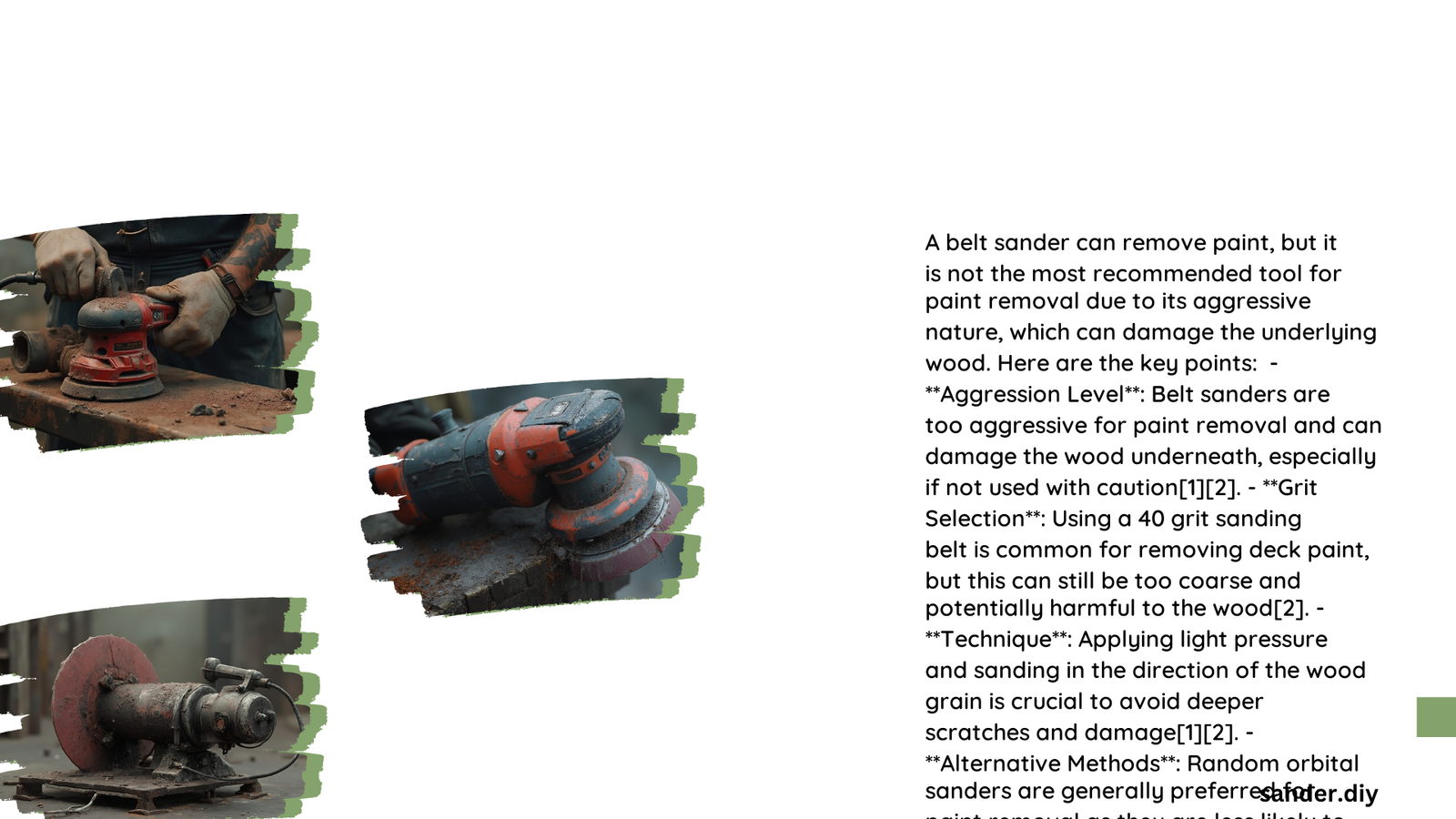A belt sander can technically remove paint, but it’s not the most recommended method for delicate surfaces. This powerful tool offers quick paint removal but comes with significant risks of wood damage, surface scratching, and uneven results. Professionals and DIY enthusiasts must carefully consider technique, grit selection, and alternative methods to protect underlying surfaces during paint stripping projects.
What Makes Belt Sanders Challenging for Paint Removal?
Belt sanders are aggressive power tools designed for material removal, which creates both advantages and potential problems when stripping paint. Their high-speed rotation and coarse abrasive surfaces can quickly remove paint layers but simultaneously risk damaging the underlying wood or surface.
Key Characteristics of Belt Sanders for Paint Removal
| Characteristic | Impact on Paint Removal |
|---|---|
| Speed | High-speed rotation can quickly strip paint |
| Grit Range | 40-60 grit most effective but potentially damaging |
| Surface Interaction | Aggressive material removal |
| Precision | Limited control compared to other sanders |
How Aggressive Are Belt Sanders on Different Paint Types?

Paint Adhesion and Removal Challenges
Different paint types present unique challenges for belt sanders:
- Latex Paints: Softer, easier to remove but risk surface gouging
- Oil-Based Paints: Harder adhesion, requires more aggressive approach
- Epoxy Paints: Extremely difficult to remove, potential surface damage
What Techniques Minimize Damage During Paint Removal?
Successful paint removal with a belt sander requires careful technique:
- Select Appropriate Grit
- Start with 60-80 grit sandpaper
- Gradually transition to finer grits
-
Avoid extremely coarse grits that damage surfaces
-
Control Sanding Pressure
- Apply light, consistent pressure
- Avoid pressing too hard
-
Let the sander’s weight do most of the work
-
Maintain Consistent Movement
- Sand in direction of wood grain
- Keep sander moving to prevent gouging
- Overlap passes minimally
What Safety Precautions Are Essential?
Personal Protection and Environmental Considerations
- Wear Protective Gear
- N95 respirator mask
- Safety glasses
- Dust-resistant gloves
-
Long-sleeve clothing
-
Workspace Preparation
- Ensure proper ventilation
- Use dust collection system
- Cover surrounding areas
- Work in well-lit environment
Are Alternative Paint Removal Methods Better?
Comparison of Paint Removal Tools
| Tool | Precision | Speed | Surface Gentleness |
|---|---|---|---|
| Belt Sander | Low | High | Low |
| Random Orbital Sander | Medium | Medium | High |
| Chemical Paint Stripper | High | Low | High |
| Heat Gun | Medium | Medium | Medium |
Expert Recommendations
Professional woodworkers typically recommend:
- Using belt sanders sparingly
- Choosing alternative methods for delicate surfaces
- Practicing on scrap materials first
- Consulting surface-specific guidelines
Final Considerations
While a belt sander can remove paint, it’s not universally recommended. Careful technique, appropriate grit selection, and understanding potential risks are crucial for successful paint removal.
Pro Tips
- Test on small, inconspicuous area first
- Consider professional assistance for valuable surfaces
- Invest in multiple sanding tools for versatility
Potential Risks to Avoid
- Deep wood scratches
- Uneven surface removal
- Dust generation
- Potential lead paint exposure
Reference:
– Pneumatic Tools Paint Removal Guide
– Mr Sander® Wood Floor Preparation
– Surface Preparation Techniques
